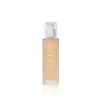What's inside
What's inside
 Key Ingredients
Key Ingredients

 Benefits
Benefits

 Concerns
Concerns

No concerns
 Ingredients Side-by-side
Ingredients Side-by-side

Water
Skin ConditioningSalix Alba Bark Extract 10%
AstringentCentaurea Cyanus Flower Water 9%
Skin ConditioningSchisandra Chinensis Fruit Extract 9%
Skin ConditioningMorus Alba Bark Extract 8.7%
Skin ConditioningNelumbo Nucifera Leaf Extract 8.7%
Skin ConditioningMethylpropanediol
SolventGlycerin
HumectantSaccharomyces/Honey Ferment Filtrate
Skin ConditioningSaccharomyces/Xylinum/Black Tea Ferment
Skin Conditioning1,2-Hexanediol
Skin ConditioningPropolis Extract 1%
Skin ConditioningButylene Glycol
HumectantBenzyl Glycol
SolventHydroxyethylcellulose
Emulsion StabilisingCitric Acid
BufferingSodium Citrate
BufferingDisodium EDTA
Ethylhexylglycerin
Skin ConditioningWater, Salix Alba Bark Extract 10%, Centaurea Cyanus Flower Water 9%, Schisandra Chinensis Fruit Extract 9%, Morus Alba Bark Extract 8.7%, Nelumbo Nucifera Leaf Extract 8.7%, Methylpropanediol, Glycerin, Saccharomyces/Honey Ferment Filtrate, Saccharomyces/Xylinum/Black Tea Ferment, 1,2-Hexanediol, Propolis Extract 1%, Butylene Glycol, Benzyl Glycol, Hydroxyethylcellulose, Citric Acid, Sodium Citrate, Disodium EDTA, Ethylhexylglycerin
Bacillus Ferment Filtrate
Skin ConditioningDipropylene Glycol
HumectantButylene Glycol
HumectantGlycerin
Humectant1,2-Hexanediol
Skin ConditioningOpuntia Ficus-Indica Stem Extract
Skin ConditioningPolyglyceryl-10 Laurate
Skin ConditioningAmmonium Acryloyldimethyltaurate/Vp Copolymer
Trehalose
HumectantAdenosine
Skin ConditioningTheobroma Cacao Seed Extract
AntioxidantTromethamine
BufferingTocopherol
AntioxidantOpuntia Ficus-Indica Seed Oil
EmollientCeramide NP
Skin ConditioningPhytosphingosine
Skin ConditioningHydrogenated Lecithin
EmulsifyingEthylhexylglycerin
Skin ConditioningDisodium EDTA
Parfum
MaskingBenzyl Salicylate
PerfumingHexyl Cinnamal
PerfumingBacillus Ferment Filtrate, Dipropylene Glycol, Butylene Glycol, Glycerin, 1,2-Hexanediol, Opuntia Ficus-Indica Stem Extract, Polyglyceryl-10 Laurate, Ammonium Acryloyldimethyltaurate/Vp Copolymer, Trehalose, Adenosine, Theobroma Cacao Seed Extract, Tromethamine, Tocopherol, Opuntia Ficus-Indica Seed Oil, Ceramide NP, Phytosphingosine, Hydrogenated Lecithin, Ethylhexylglycerin, Disodium EDTA, Parfum, Benzyl Salicylate, Hexyl Cinnamal
Ingredients Explained
These ingredients are found in both products.
Ingredients higher up in an ingredient list are typically present in a larger amount.
1,2-Hexanediol is a synthetic liquid and another multi-functional powerhouse.
It is a:
- Humectant, drawing moisture into the skin
- Emollient, helping to soften skin
- Solvent, dispersing and stabilizing formulas
- Preservative booster, enhancing the antimicrobial activity of other preservatives
Butylene Glycol (or BG) is used within cosmetic products for a few different reasons:
Overall, Butylene Glycol is a safe and well-rounded ingredient that works well with other ingredients.
Though this ingredient works well with most skin types, some people with sensitive skin may experience a reaction such as allergic rashes, closed comedones, or itchiness.
Learn more about Butylene GlycolDisodium EDTA plays a role in making products more stable by aiding other preservatives.
It is a chelating agent, meaning it neutralizes metal ions that may be found in a product.
Disodium EDTA is a salt of edetic acid and is found to be safe in cosmetic ingredients.
Learn more about Disodium EDTAEthylhexylglycerin (we can't pronounce this either) is commonly used as a preservative and skin softener. It is derived from glyceryl.
You might see Ethylhexylglycerin often paired with other preservatives such as phenoxyethanol. Ethylhexylglycerin has been found to increase the effectiveness of these other preservatives.
Glycerin is already naturally found in your skin. It helps moisturize and protect your skin.
A study from 2016 found glycerin to be more effective as a humectant than AHAs and hyaluronic acid.
As a humectant, it helps the skin stay hydrated by pulling moisture to your skin. The low molecular weight of glycerin allows it to pull moisture into the deeper layers of your skin.
Hydrated skin improves your skin barrier; Your skin barrier helps protect against irritants and bacteria.
Glycerin has also been found to have antimicrobial and antiviral properties. Due to these properties, glycerin is often used in wound and burn treatments.
In cosmetics, glycerin is usually derived from plants such as soybean or palm. However, it can also be sourced from animals, such as tallow or animal fat.
This ingredient is organic, colorless, odorless, and non-toxic.
Glycerin is the name for this ingredient in American English. British English uses Glycerol/Glycerine.
Learn more about Glycerin